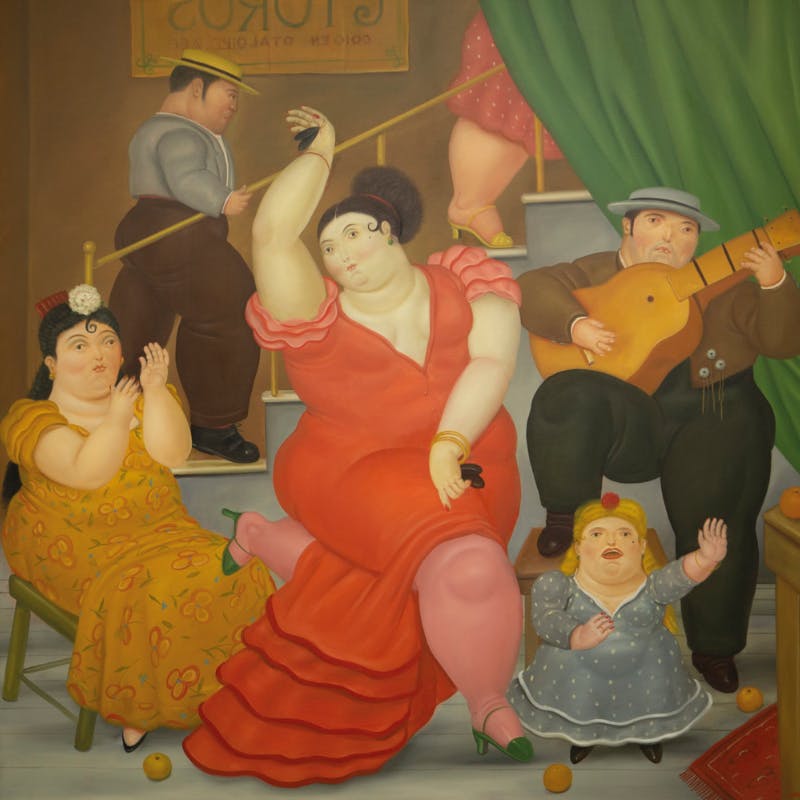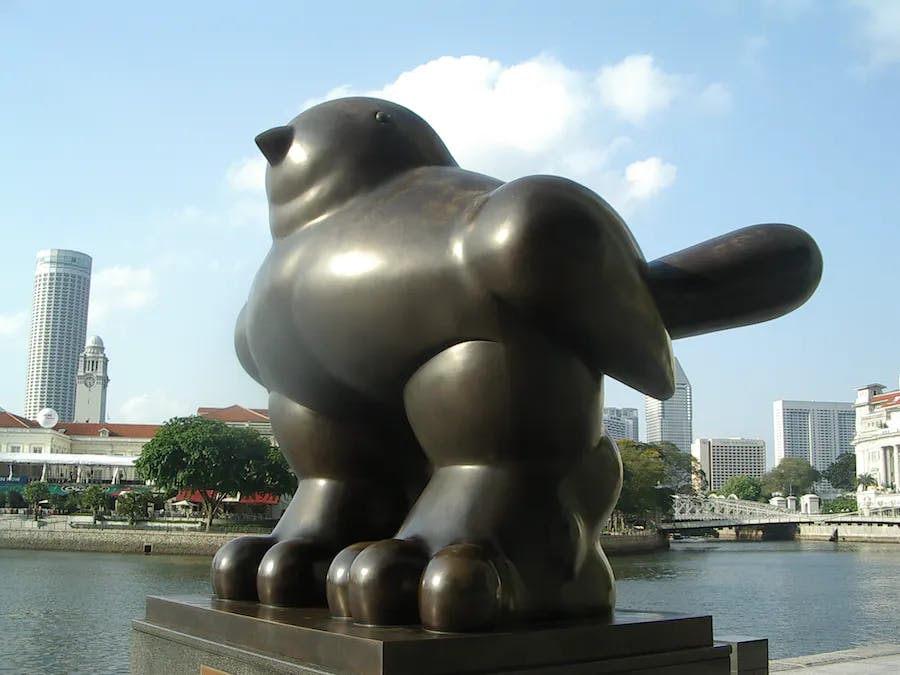Remembering Fernando Botero and His Portraits of Large Proportions
We look back on the life of the Colombian artist who became famous worldwide for his iconic and voluminous paintings and sculptures in his signature style called "Boterismo."
Fernando Botero, born in Medellín in 1932, lost his father at the age of four. His mother, who worked as a seamstress, received support from his uncle, who took care of his education and sent him to a school for aspiring matadors. But Bolero's heart beat for art, which he encountered primarily in the baroque churches of his hometown. These awakened his love for the Old Masters of Europe, however bullfighting would also later become a recurring theme in his oeuvre.
He followed his passion, which paid off in 1948 when some of his works were shown in a group exhibition. Three years later he went to Bogotá, where his first solo exhibition was dedicated to his early works. Botero invested the money he earned from his first sales in a trip to Europe, where he wanted to see the Old Masters he admired with his own eyes.
Related: The 7 Most Expensive Works by Francisco Goya

His first port of call was Madrid, where he studied at the Academia de San Fernando and copied paintings by Velázquez and Goya in the Prado. After Paris, where he visited the Louvre, he went to Florence. There he studied art history, especially Renaissance and fresco painting. Back in Bogotá, he exhibited the works he had created in Europe, but they were not well received. Fernando Botero then went in search of his own style in Mexico, where he was influenced by the Diego Rivera murals and finally found it with his fantastical, over-proportioned figures, a style referred to as "Boterismo."
Related: Mona Lisa: Art History's Ultimate Muse
He inflated the Old Masters he so admired, including Leonardo da Vinci's Mona Lisa and Jan van Eyck's Arnolfini Portrait, and painted portraits of general people with which he criticized society. He depicted everyday life in his home country with echoes of Latin American folk art; he once described himself as the “most Colombian of all Colombian artists”. The grotesque over-presence of his characters is brilliantly executed and brims with irony, but at the same time does not seem malicious, which has certainly contributed to the general popularity of Botero's work.
Related: From Van Eyck to Botero: The Mystery of the Arnolfini Portrait

Fernando Botero's career took off in the late 1950s, and in 1958 he was appointed professor of painting at the Bogotá Academy of Art. But just two years later he was drawn back out into the world. His destination was New York City, where he won the Guggenheim National Prize for Colombia, which further boosted his international career. His first important European exhibition took place in Baden-Baden, Germany in 1966.
In the following years, Botero commuted between New York, Colombia and Europe until he settled in Paris in 1973. There he began to turn to sculpture, in which the volume of his figures he aimed for could fully develop. His monumental sculptures, depicting people, animals or both together, continue to be exhibited in cities around the world or permanently installed in public spaces since the late 1970s. Numerous exhibitions in many countries also made Botero a globetrotter who divided his (working) time between New York, Paris, Monte Carlo and the Tuscan Pietrasanta, where he set up a sculpture studio in 1983.
Related: The 5 Most Important Sculptures in Italy
In the early 1980s, with his La Corrida paintings, he returned thematically to his youth, when he trained to become a bullfighter. In 2006, he caused a stir with a series of images denouncing the torture scandal in Iraq's Abu Ghraib prison.

The peace process in Colombia was very important to Botero. In 1995, more than 30 people were killed and over 200 others were injured in a bomb attack by the FARC-EP guerrilla movement in his hometown of Medellín, in which the explosive device was installed under his monumental sculpture The Bird. Botero insisted on leaving the remains of the destroyed sculpture as a memorial and placed a new example next to it.
Botero was married twice and had four children. In 1974, his four-year-old son Pedro, whom he immortalized in many works, died in a traffic accident in Spain. The relationship with Pedro's mother ended a year later. 1978, he married the Greek artist Sophia Vari, with whom he lived until her death in May of this year.

Fernando Botero died on September 15, 2023 at the age of 91 from complications of pneumonia at his home in Monaco. His work as an artist accompanied him until the end.
Related: Seeing Double: Art in Art
In 2000, a donation from Fernando Botero made it possible to found the museum named after him in Bogotá. The artist donated 123 of his own works of art, as well as 85 pieces from his personal collection, including works by Chagall, Dalí, Picasso and Renoir. He donated 119 additional works to the Museo de Antioquia in Medellín.
The record for his work was set at auction last year, when his bronze sculpture Man with Horse sold for $4.3 million at Christie's.


